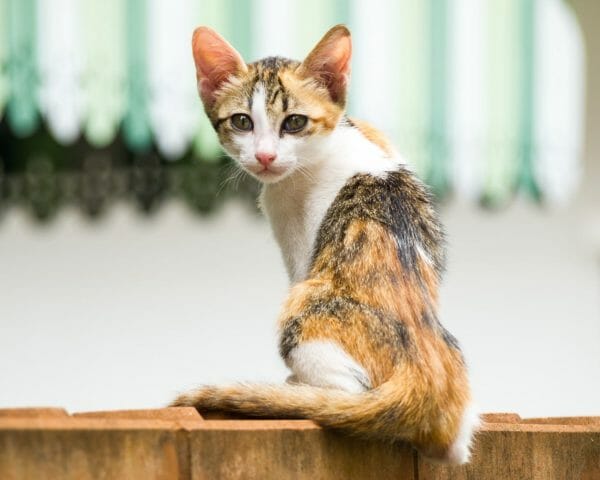Cat Anemia Symptoms
Similar to humans and other animals, felines are also susceptible to become anemic in various medical-related situations that may be long-term or short-term in nature. Cat anemia is described as an urgent situation whereby the bone marrow of the body is failing to produce and circulate enough oxygen-carrying red blood cells throughout the body.
The properties of the red blood cells are crucial to the healthy functioning of the bodily organs, such as the heart, kidneys, or lungs.
Why are Red Blood Cells Important?
Besides circulating oxygen and hemoglobin throughout the bloodstream, these cells are also responsible for collecting carbon dioxide.
It is important to keep in mind that this shortage of red blood cells is the result of an underlying medical issue and it is not, in and of itself, a disorder.
While an anemic feline may be easily helped through veterinary interventions, there are some cases that are urgent and life-threatening. These cases must be swiftly taken to an animal hospital.
 Signs of an Anemic Cat
Signs of an Anemic Cat
Listed below are the commonly seen signs in the presence of this disorder. An acute case may rapidly bring about symptoms out of the blue. These are usually the most dangerous situations.
There are also chronic cases resulting in an internal illness or infection. These are more effectively treated and prevented.
- Gums that are white in color
- Diminished appetite
- Black stool mixed with blood
- Accelerated heart rate
- Significant decrease in activity
- Sluggishness
- Decline in normal weight
While some of these symptoms may be instantly apparent, others may be slow to show up (especially in chronic cases).
Because of this, it is vitally important that cat owners keep an eye out for these symptoms, as they may indicate a serious problem is going on unnoticed.
How Do Cats Become Anemic?
Felines may encounter this condition through a wide variety of avenues, with some being minor and others being life-threatening.
A feline most often deals with a discrepancy of red blood cells through some of the following ways:
- Parasitic infestations (such as those from hookworms, fleas, or ticks)
- Various forms of carcinoma
- Injuries leading to significant blood loss
- Hemolysis (usually triggered by autoimmune disorders)
- Kidney failure
- Poison or toxicity
- Infections (may be bacterial or viral)
- Inherited conditions
- Immune system disorders
- Deficient iron levels (very rare)
The fundamental problems that may lead to this condition are numerous in number and description.
This condition, as mentioned before, can become very serious in a short amount of time. For this reason and many others, a cat that is suspected of being anemic should be seen by a board-certified vet as soon as possible.
Can Kittens Become Anemic?
Virtually every animal, young or old, may experience this disorder of the blood cells.
For newborn kittens, this condition often occurs after it ingests its mother’s milk that is abnormally full of antibodies. This can contaminate the red blood cells and subsequently lead to hemolysis in 3 days or less. This condition is known as neonatal isoerythrolysis.
On the other hand, some kittens, with their susceptible immune systems, become infected with parasites. Worms, ticks, and lice may diminish a large portion of the kitten’s blood supply. This may lead to the kitten becoming anemic.
Keeping a kitten indoors as much as possible is highly advised. For any questions about how to help a kitten with anemia, a knowledgeable veterinarian is the best source for answers.
 Nonregenerative vs. Regenerative Anemia in Cats
Nonregenerative vs. Regenerative Anemia in Cats
When a cat is diagnosed with this condition, it may be classified as 1 of the 2 types that exist. Figuring out which type is present in the feline is the first step to identifying the exact cause of blood deficiency.
- Nonregenerative:
If a feline possesses this kind of condition, the body is not properly responding to the shortage of red blood cells amply. Instead of producing the necessary reticulocytes (undeveloped red blood cells) in order to stabilize the deficiency, the bone marrow does nothing.
Anemia in cats with kidney failure, chronic illnesses, and infections (such as feline leukemia) are all related to the nonregenerative type.
- Regenerative:
In this situation, the bone marrow is working as it should. If a dangerous shortage of red blood cells is detected, the bone marrow will respond appropriately by supplying enough reticulocytes to restore the body to equilibrium.
Even though the reticulocytes are not fully developed, these premature cells can stabilize the cat for the time being.
Sudden loss of blood, toxicity due to poison, and hemolysis (red blood cells are destroyed by the immune system) may all be causes of this regenerative type.
How are Anemic Felines Treated?
The goal of treatment for cat anemia that is in this urgent state is knowing how to increase red blood cells in cats effectively and quickly.
If a cat is presenting with an emergency onset of cat anemia, the vet will most likely resort to an immediate blood transfusion after the blood type is identified.
While this is not a permanent solution, it will work to bring the red blood cell count to a safe level. This will bring the feline out of a life-threatening state of health.
After the feline is stabilized, the vet’s job will then be to utilize diagnostic tests and evaluations to determine the underlying cause of the blood cell shortage.
 Cat Anemia Home Treatment
Cat Anemia Home Treatment
If the vet diagnoses a condition that is chronic and long-term in nature, they will most likely recommend medication that is started at the treatment facility and continued at home.
Medications may include:
- Dewormers
- Antibiotics (to combat infections)
- Vaccines
- Anti-parasitics
- Immune disorder treatments
While the treatment depends on the official diagnosis, medication is generally part of the treatment regimen for felines with this condition.
Average Prognosis
Cat anemia that is short-term and minor tends to be easily treatable. If this condition is rooted in an ongoing medical problem, the prognosis may be excellent as long as the prescribed medication and treatment are being consistently administered.
In sudden, severe cases, the prognosis may be poorer if immediate treatment is put off unnecessarily.
In all other situations, however, the overall life expectancy of cat anemic felines is good as long as the root cause is addressed quickly and efficiently. Take your cat to the vet immediately to get tested for anemia. Review some other cat conditions and make sure you’re educated for the sake of your loyal feline.





 Signs of an Anemic Cat
Signs of an Anemic Cat Nonregenerative vs. Regenerative Anemia in Cats
Nonregenerative vs. Regenerative Anemia in Cats